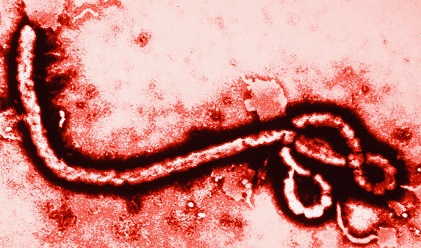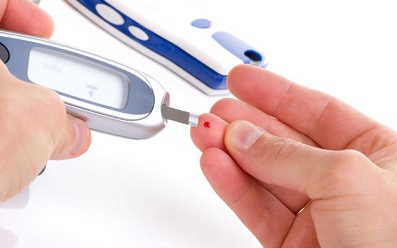In today's modern world, it is common to hear about diseases that you'd never heard a decade ago. A number of these newly discovered diseases are well understood and treated, but many others are still incurable. Some of them are lethal, while others are not. Still, they've been affecting the way people live today. Here's a bit more about some horrible and even life-threatening diseases.

Horrible Yet Incurable Diseases
Schizophrenia
Schizophrenia is an intriguing mental disorder in which patient fail to differentiate between fantasy and reality.
Considered one of the most puzzling disorders, there are no effective medical tests available for diagnosis. Its symptoms usually include hallucinations, delusions, and non-coherence of speech and thoughts. The patient will also lose the ability to recognize the real world people.
Ebola
Among all the incurable diseases, Ebola is now known by the whole world. It is a virus and belongs to the family of Filoviridae. It takes its name from the Ebola River in the central Africa where it was first recorded in 1976. It is usually caused by 4 viruses from the genius Ebolavirus, including Sudan Virus, Bundibugyo virus, Tai Forest virus, and Ebola virus.
Some of the most common symptoms include severe headache, fever, weakness, fatigue, muscle pain, vomiting, diarrhea, unexplained hemorrhage, and abdominal pain. These symptoms usually appear between 2 and 21 days of being exposed to Ebola.
Polio
Polio, or poliomyelitis, is also known as infantile paralysis because more than half of all polio cases occur in children under 5 years of age. This acute viral infection disease affects the nervous system and may transfer from one person to another through fecal matter. Drinking contaminated water can cause polio.
It usually begins with rather common symptoms such as headache, fever, fatigue, nausea, and muscle pains and spasms, but sometimes, it turns into a more serious paralysis of muscles in several limps, including the throat and the chest.
Creutzfeldt-Jakob Disease
It is quite rare, affecting one in a million, but is a fatal degenerative disease that cripples your nervous system. This transmissible spongiform encephalopathy is usually caused by an abnormal version of a protein called a "prion", which often affects biological processes.
The most common symptoms include personality changes, depression, anxiety, impaired thinking, memory loss, insomnia, blurred vision, difficulty swallowing, difficulty speaking and jerky movements.
Diabetes
It's a disorder of carbohydrate metabolism and impairs body's ability to produce or respond to insulin. It could be Type I diabetes – an autoimmune disorder in which certain antibodies destroy insulin-producing cells. It could also be Type II diabetes, a condition caused by slow pancreatic secretion of insulin or insufficient responsiveness in target cells to produce insulin.
Some of the most common diabetes symptoms include extreme thirst, frequent urination, hunger pangs, extreme fatigue, bruises with slow healing and blurry vision. You will lose weight if it's Type I diabetes and notice pain, tingling, and numbness in feet and hands if it's Type II diabetes.
AIDS
Acquired Immunodeficiency Syndrome or AIDS refers to progressive failure of the immune system, which means your body would no longer be able to fight off life-threatening cancers and infections. The Human Immunodeficiency Virus (HIV) is responsible for this condition, and the HIV infection occurs by the transfer of semen, blood, pre-ejaculate, vaginal fluid, and breast milk.
Most symptoms appear within 2-4 weeks of being exposed to HIV, and they may include swollen glands, fever, sore throat, fatigue, rash, headache, muscle and joint aches and body pain. If you already have HIV infection and aren't taking medication, you may experience other symptoms like rapid weight loss, pneumonia, sores of genitals, depression and memory loss.
Asthma
It is the chronic disorder of the lungs in which your airways get inflamed and make breathing difficult. You may develop asthma due to allergy, environmental factors, genetics, tobacco use, etc.
Some of the most common symptoms include coughing, wheezing, shortness of breath and chest tightness. The symptoms could become worse at night or in response to cold air or exercise.
Cancer
Cancer is a heterogeneous class of disease – it refers to a group of over 100 distinct diseases in which cells display uncontrolled growth. The disease affects 1 in 3 persons in developed countries and is one of the major causes of death in the world.
You may notice different symptoms depending on the type of cancer you've developed. A lump in your breast is usually a sign of breast cancer. You may notice severe, persistent coughing, breathlessness and chest pain if you've developed lung cancer. Change in bowel habits, blood in urine, blood when you cough, moles with irregular shapes and unexplained weight loss may well be symptoms of cancer.
Progeria
Also known as Hutchison-Gilford syndrome, Progeria is a rare, progressive genetic disorder. It affects children in the first couple of years of their lives and makes them age rapidly. This abnormal aging process is caused by a single gene, called lamin A (LMA), mutation, which is responsible for making a protein to hold the center of a cell together.
People with Progeria may experience symptoms like slowed growth with below-average weight and height; narrowed face with thin lips and small lower jawbone; large head as compared to the face; loss of hair, including eyebrows and eyelashes; spotty, thinning, wrinkled skin; and incomplete closure of the eyelids.
Other Incurable Diseases
Common Cold: The virus causing common cold transmits through exposure to nasal secretions or saliva of an infected person. The most common symptoms may include runny nose, sore throat, cough, nasal congestion, muscle aches, headaches, fatigue, loss of appetite and shivering. (BTW, it seems strange that cold cannot be cured, right? But it’s true, just google it.)
Spinocerebellar Ataxia: This genetic disease has many different types, but certain drugs are now available to help alleviate its symptoms like tremors and loss of muscle control.
Cerebral Amyloid Angiopathy: This neurological condition makes a protein, called amyloid, to build up on the walls of nervous system's blood vessels. It can cause bleeding into your brain and produce symptoms like headache, drowsiness and speech changes.











View All Comments /Add Comment